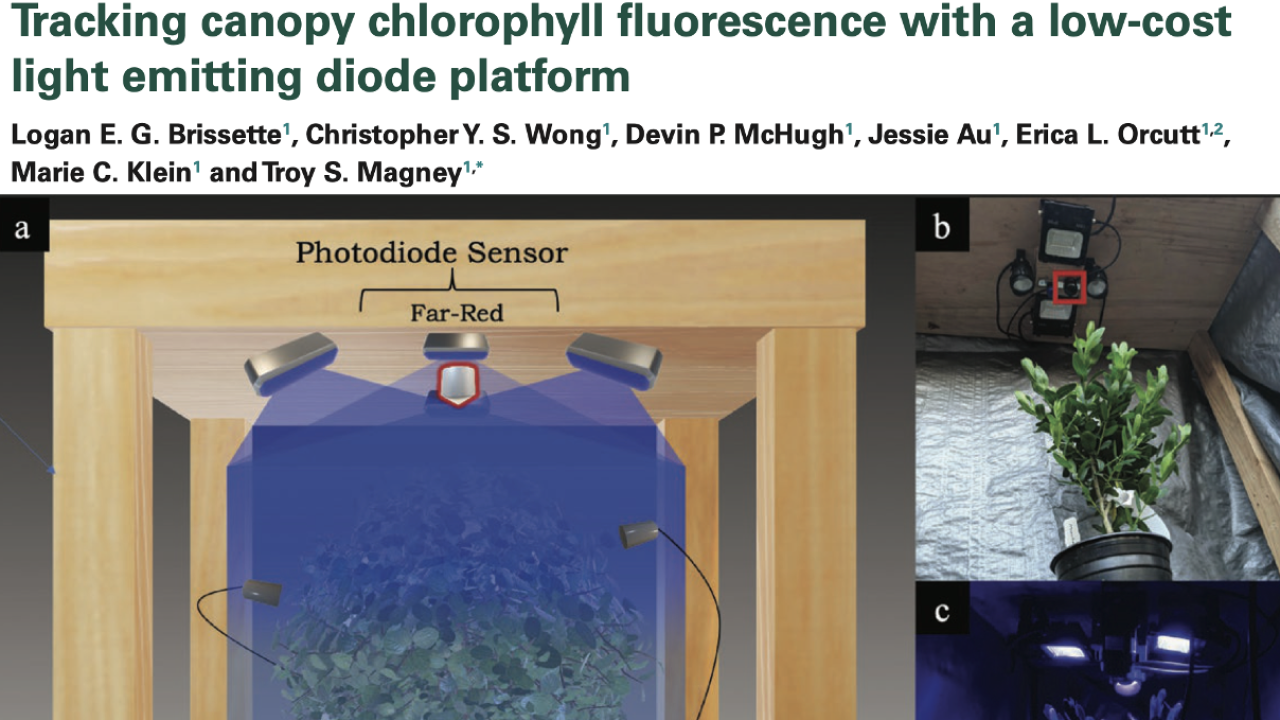
Logan's new paper selected as Editor's Choice in AoBPlants!
New lab paper by Logan (former M.S. student) was awarded Editor's Choice at AoBP Plants!
Paper abstract:
Chlorophyll fluorescence measured at the leaf scale through pulse amplitude modulation (PAM) has provided valuable insight into photosynthesis. At the canopy- and satellite-scale, solar-induced fluorescence (SIF) provides a method to estimate the photosynthetic activity of plants across spatiotemporal scales. However, retrieving SIF signal remotely requires instruments with high spectral resolution, making it difficult and often expensive to measure canopy-level steady-state chlorophyll fluorescence under natural sunlight. Considering this, we built a novel low-cost photodiode system that retrieves far-red chlorophyll fluorescence emission induced by a blue light emitting diode (LED) light source, for 2 h at night, above the canopy. Our objective was to determine if an active remote sensing-based night-time photodiode method could track changes in canopy-scale LED-induced chlorophyll fluorescence (LEDIF) during an imposed drought on a broadleaf evergreen shrub, Polygala myrtifolia. Far-red LEDIF (720–740 nm) was retrieved using low-cost photodiodes (LEDIFphotodiode) and validated against measurements from a hyperspectral spectroradiometer (LEDIFhyperspectral). To link the LEDIF signal with physiological drought response, we tracked stomatal conductance (gsw) using a porometer, two leaf-level vegetation indices—photochemical reflectance index and normalized difference vegetation index—to represent xanthophyll and chlorophyll pigment dynamics, respectively, and a PAM fluorimeter to measure photochemical and non-photochemical dynamics. Our results demonstrate a similar performance between the photodiode and hyperspectral retrievals of LEDIF (R2 = 0.77). Furthermore, LEDIFphotodiode closely tracked drought responses associated with a decrease in photochemical quenching (R2 = 0.69), Fv/Fm (R2 = 0.59) and leaf-level photochemical reflectance index (R2 = 0.59). Therefore, the low-cost LEDIFphotodiodeapproach has the potential to be a meaningful indicator of photosynthetic activity at spatial scales greater than an individual leaf and over time.
Citation:
Logan E G Brissette, Christopher Y S Wong, Devin P McHugh, Jessie Au, Erica L Orcutt, Marie C Klein, Troy S Magney, Tracking canopy chlorophyll fluorescence with a low-cost light emitting diode platform, AoB PLANTS, Volume 15, Issue 5, October 2023, plad069, https://doi.org/10.1093/aobpla/plad069